🎣 Audit Targets Non-Resident CDLs
Plus: Canada backs off digital tax after tariff threats, Werner beats a $100M verdict, Samsara teams up with HappyRobot to bring AI voice into freight ops... and more in today's newsletter.
These arteries enable the rapid, reliable distribution that modern trade necessitates, from perishable goods to essential industrial components.

The freight transportation network is the backbone of American commerce, ensuring the seamless flow of goods across the nation. We're taking a close look at the roadways, railways, and waterways that are the most critical bearing more than 50 million tons per year and underpinning the vitality of the U.S. economy.
Freight corridors are the veins of America’s economy, channeling essential goods across the nation. Their efficiency shapes the economic landscape, affecting everything from product prices to delivery speeds. For businesses, streamlined freight movement is crucial for meeting market demands and maintaining competitiveness. For consumers, it means affordability and availability of goods. These routes are essential to the health and growth of the U.S.
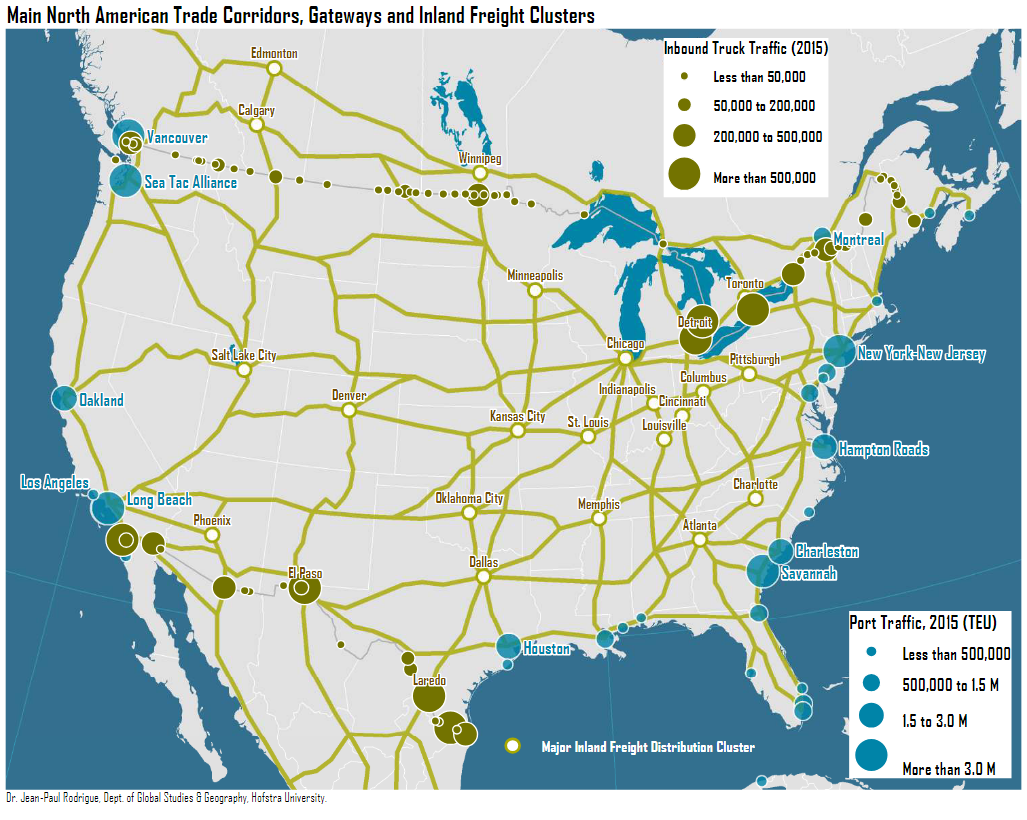
These arteries enable the rapid, reliable distribution that modern trade necessitates, from perishable goods to essential industrial components.
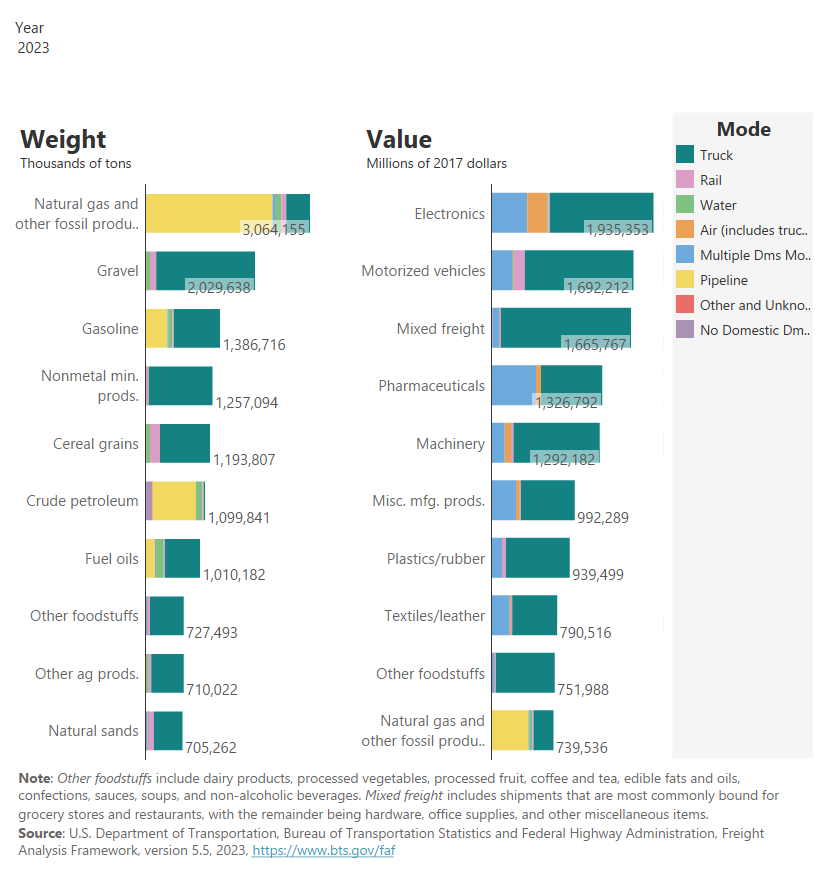
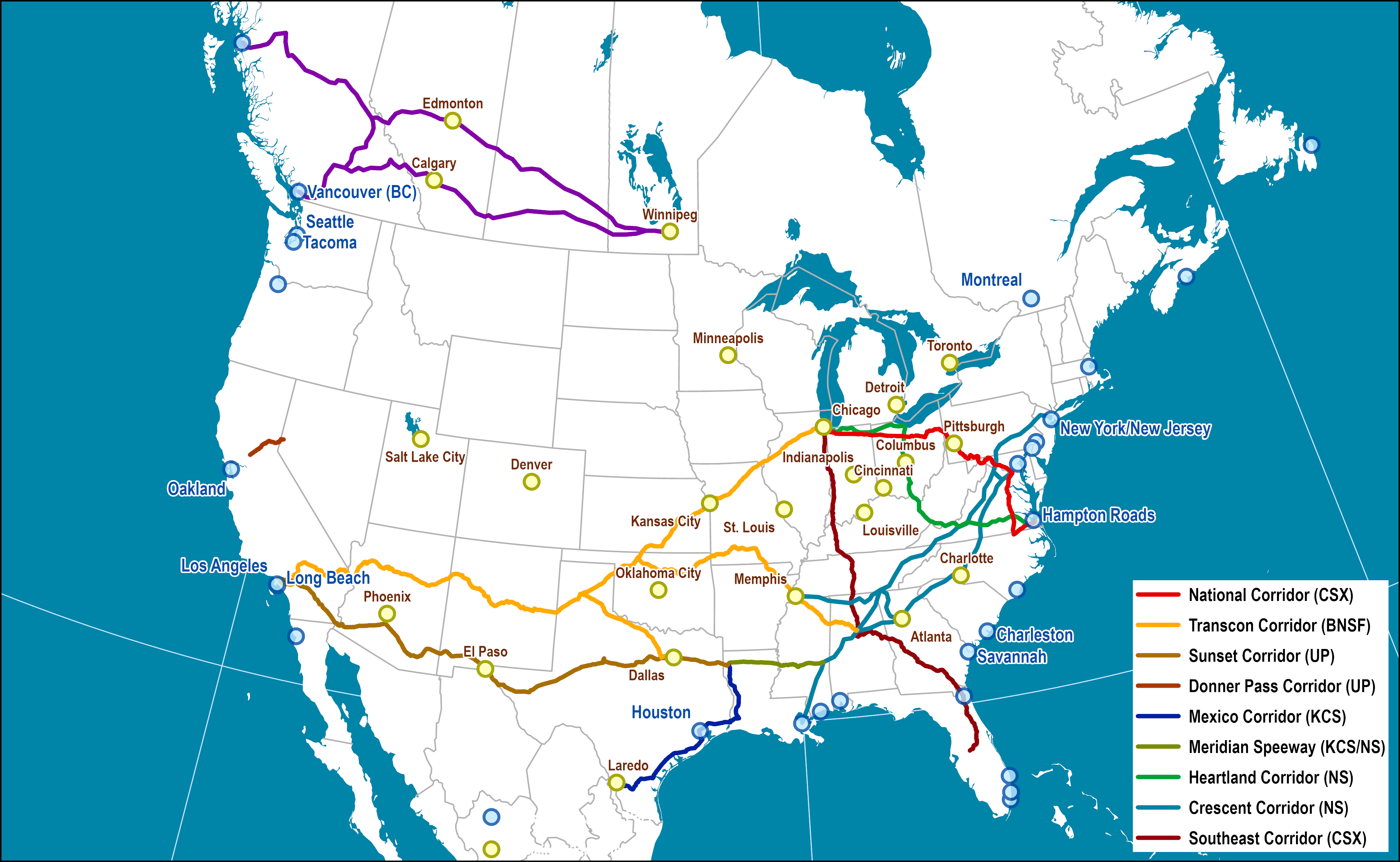
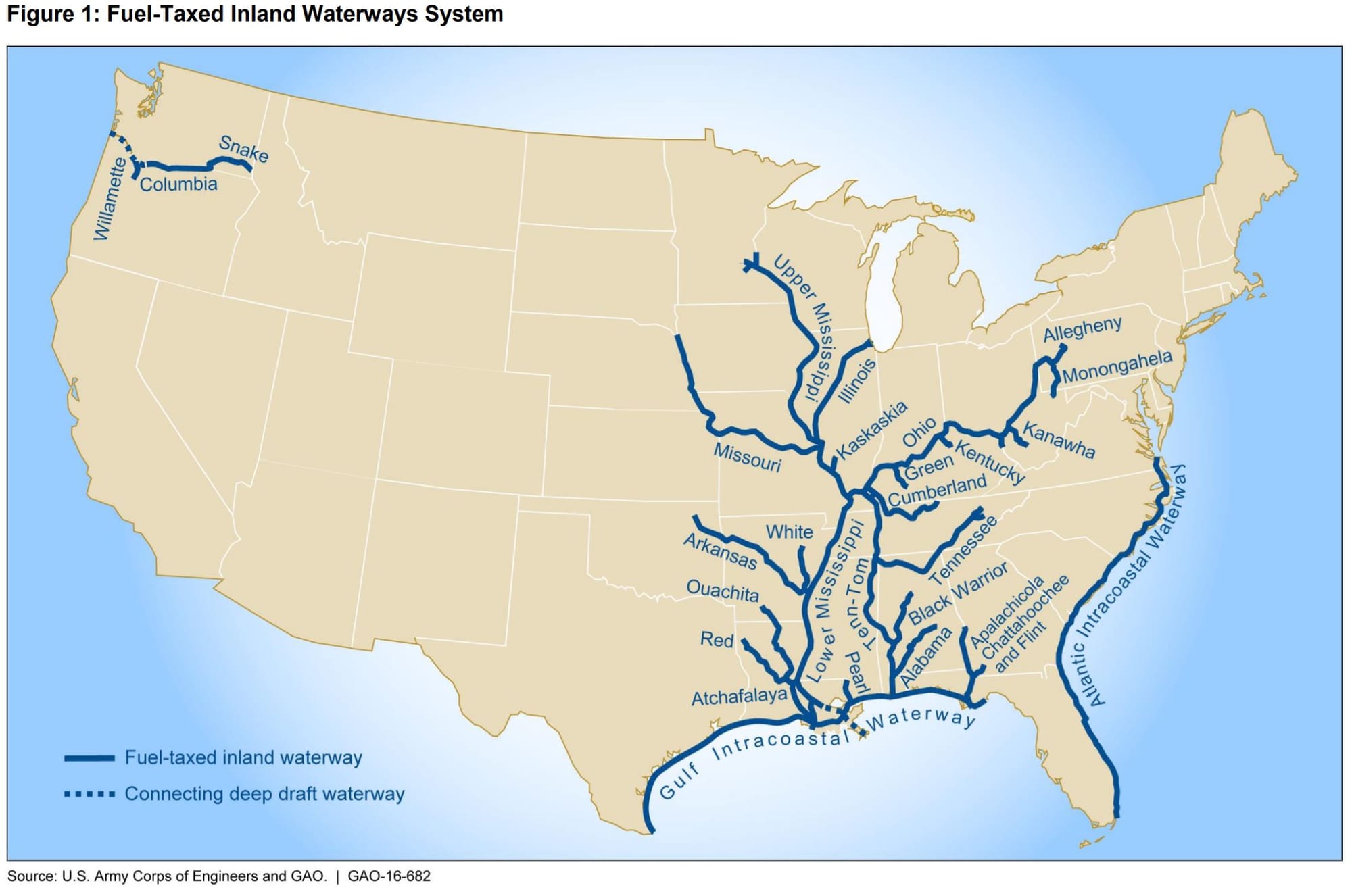
Image Sources: Transport Geography & Grains.Org
The first image shows the major railway corridors in the U.S. Some of the key projects are:
The second image highlights the key U.S. waterways, the most commercially viable of which travels along the Mississippi River and its branches.
As we noted in a feature on the history of the Chicago River, the sole inland link between the Great Lakes and the Mississippi River passes through the Chicago Area Waterway System (CAWS).
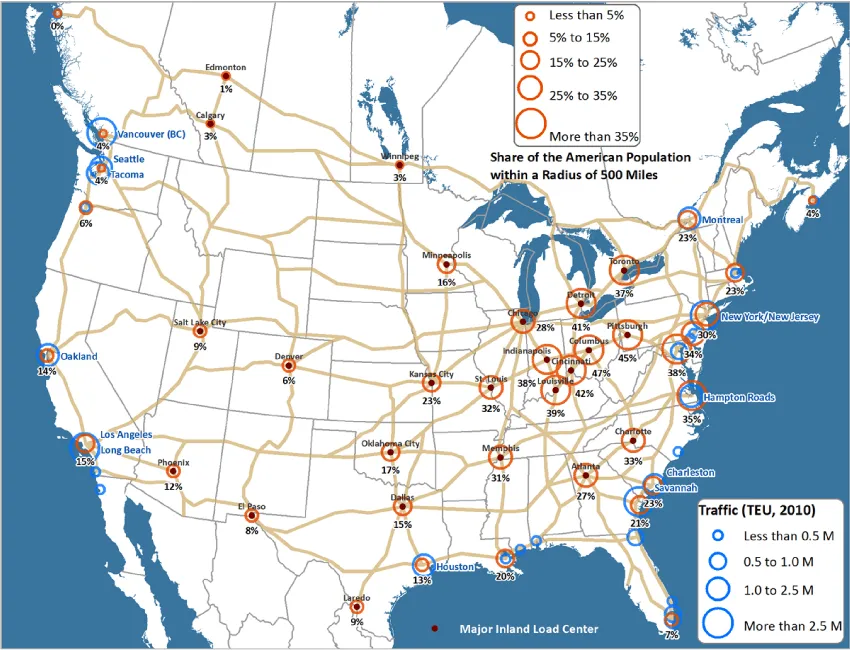
The U.S. freight network's backbone is its heavily trafficked segments, vital for sustaining the nation's logistics. It's also interesting to compare that to population accessibility and how that impacts the flow of the supply chain.
This contrast shows the balancing act between regional service and long-distance freight, requiring efficient supply chain management.
Freight corridors face pressing challenges, including congestion, which slows delivery, maintenance issues that can lead to disruptions, and the need for upgrades to handle increasing volumes.
However, these challenges present opportunities: investing in smart infrastructure can alleviate traffic, proactive upkeep can prevent bottlenecks, and technological innovations can enhance capacity and efficiency, ensuring these arteries of commerce flow smoothly into the future.
Key Projects in the Works:
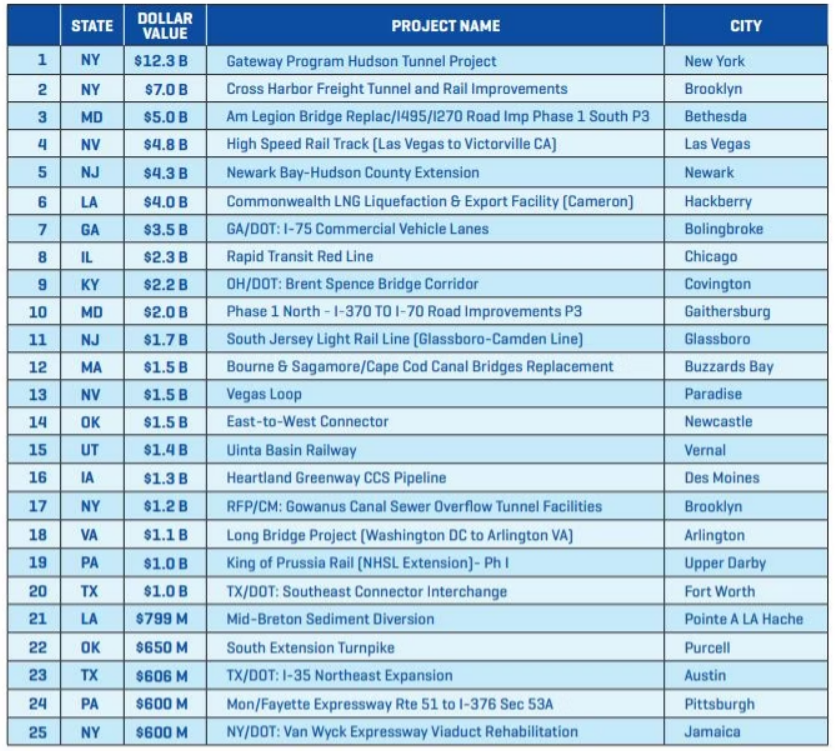
Join over 12K+ subscribers to get the latest freight news and entertainment directly in your inbox for free. Subscribe & be sure to check your inbox to confirm (and your spam folder just in case).